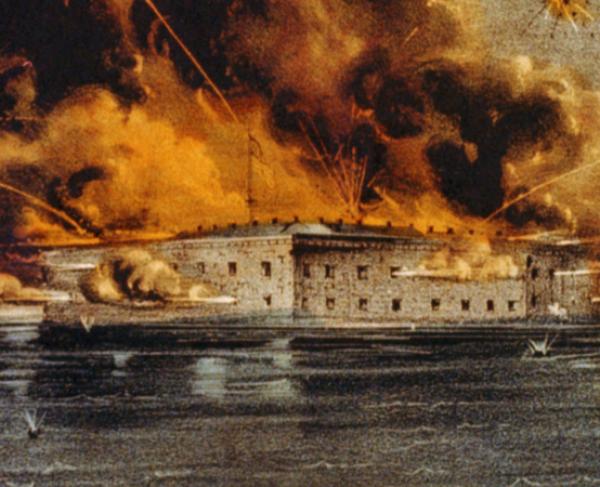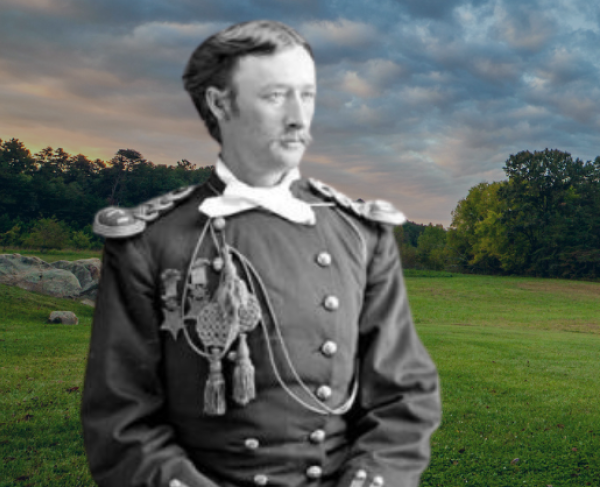“A little more butchery. A little more slaughter”

After failing to seize the vital Confederate supply hub at Petersburg, Va., Lt. Gen. Ulysses S. Grant sought to regain momentum by authorizing a bridgehead north of the James River that would allow simultaneous pushes against Richmond and Petersburg. The crossing would be at Deep Bottom, 11 miles southeast of Richmond at a horseshoe bend in the river known as Jones Neck. Battles fought from July through October 1864 in this nearly forgotten sector saw a combined loss of approximately 15,000 men, four generals killed in action and the first Medals of Honor issued to black soldiers in U.S. history.

The Deep Bottom bridgehead was established on the evening of June 20, 1864, but it was a month before Grant tested the waters in this new arena. This First Battle of Deep Bottom was part of Grant’s Third Offensive, which also included the Battle of the Crater. Maj. Gen. Winfield Hancock’s II Corps crossed the James overnight, pushing out skirmishers at dawn on July 27. This foray encountered some of Maj. Gen. Joseph B. Kershaw’s men and pushed the Confederates back, capturing four 20-lb. Parrott rifles in the process. The Rebels pulled back across Bailey’s Creek and established a new line closer to Richmond. Hancock took one look at the strength of the new position and hunkered down near the river. Kershaw, meanwhile, was reinforced by an infantry division under Lt. Gen. Richard H. Anderson.
On the morning of July 28, Anderson orchestrated a large-scale attack that swept over the Darby Farm, but the uneven terrain disrupted his momentum and a Federal counterattack drove his men back. In spite of this success, Hancock remained timid. A disappointed Grant ordered him to stay on the north side of the James, which siphoned 26,000 Confederates away from Petersburg prior to the mine detonation on July 30.
War returned to Deep Bottom in mid-August, when Grant launched his Fourth Offensive. Hancock again crossed at Deep Bottom, along with Maj. Gen. David B. Birney’s X Corps from the Army of the James and a division of cavalry. They were greeted by 11,000 troops under Maj. Gen. Charles W. Field, and efforts on August 14 resulted in negligible gains. August 16 assaults near Fussell’s Mill by the X Corps were initially successful, but were then halted by a vicious Confederate counterattack. The Federals remained north of the James until August 20, losing 2,900 men compared to 1,500 Confederate casualties, which included Brig. Gens. John Chambliss and Victor Jean Baptiste Girardey.
In late September, Maj. Gen. Benjamin F. Butler approached Grant with intelligence that the defenses of Richmond had been severely weakened. On the third Union thrust north of the river, Butler’s entire Army of the James made a two-pronged attack against the capital’s fortifications. The XVIII Corps under Maj. Gen. Edward Ord was to cross the James at Aiken’s Landing, take the lines near Chaffin’s Farm and destroy the Confederate pontoon bridge there before pushing to the New Market Road. The X Corps was tasked with taking the New Market Line farther east before linking up with the XVIII Corps and, together, marching on Richmond.
Both prongs of the attack went forward before sunrise on September 29. Ord’s men quickly pushed aside enemy skirmishers before coming up against Fort Harrison. Although the bastion was lightly defended, the attackers had to negotiate tough terrain — hilly ground leading up to a moat and 18-foot ramparts. Brig. Gen. Hiram Burnham fell mortally wounded and Ord went down with a painful leg wound, leaving Brig. Gen. Charles Heckman in charge. Heckman apparently did not understand the attack plan and, instead of pushing on to Chaffin’s Bluff, he got bogged down trying to take some of the forts and batteries in rear of Fort Harrison. This would lead to confusion and a bloody clash later in the day at Fort Gilmer.
Meanwhile, the second prong of the attack had succeeded. In an effort to salvage the reputation of black soldiers in the aftermath of the Battle of the Crater, Butler stuck every regiment of U.S. Colored Troops he had in the vanguard of the attack on the New Market Line. Facing them were 1,800 Rebels under the overall command of Brig. Gen. John Gregg. The first Union attempt to take the New Market Line was, in the words of one survivor, “all cut to pieces.” Intense musket and artillery fire shredded the ranks of the oncoming Federals, who withdrew. For 30 brutal minutes a second wave of USCTs endured raking fire from the Confederate lines before bursting through the works. Overall, Butler’s colored troops lost 1 out of 3 men in the attack on New Market Heights, and a total of 16 Medals of Honor were awarded for this one action – 14 to African American soldiers and two to white officers.
The twin losses were a disaster for the Confederates, and Lee organized two major counterthrusts to retake the ground. More than 10,000 reinforcements crossed the James to retake Fort Harrison on the morning of September 30, but the Federals easily fended off the piecemeal attack. The next attempt came on October 7, with Lee once again in the field. The Gray Fox sent two divisions on a flanking maneuver, which pushed down the Darbytown Road and drove back the Federal cavalry. An ill-advised attack upon an entrenched position, however, resulted in a bloody repulse that claimed the life of Brig. Gen. John Gregg of the Texas Brigade. Lee was so discouraged that he allegedly told a member of his staff that “…all that is left for us is to make peace on the best terms we can.”
Unable to recapture the lost ground, the Confederates quickly began to construct a new line of works laid out by Brig. Gen. Edward Porter Alexander. Grant ordered Butler to push out a reconnaissance in force to investigate this new line on October 13, which resulted in the Battle of Darbytown Road, accomplishing nothing except adding another 450 casualties to the mounting tally. On October 27, Butler launched another large-scale attack in conjunction with a move on Petersburg for Grant’s Sixth Offensive. Butler’s men had grown so jaded that they greeted any news of an upcoming movement with the grim words, “now for a little more butchery, a little more slaughter.” It was an especially apt assessment when Butler exceeded his orders to create a diversion and attacked the Confederates at the Darbytown Road and Fair Oaks. Lt. Gen. James Longstreet, back in the saddle after recovering from his Wilderness wound, ordered a counterattack that resulted in the capture of 11 stands of Federal colors and 600 prisoners.



